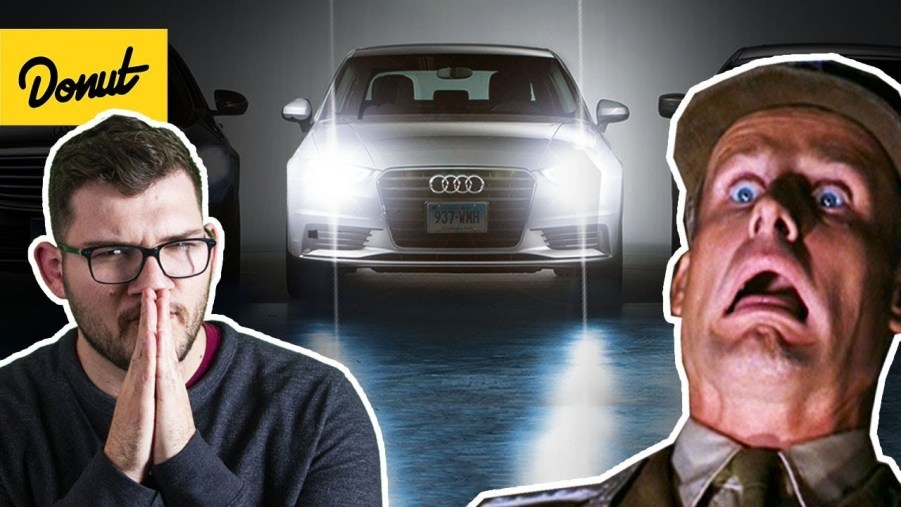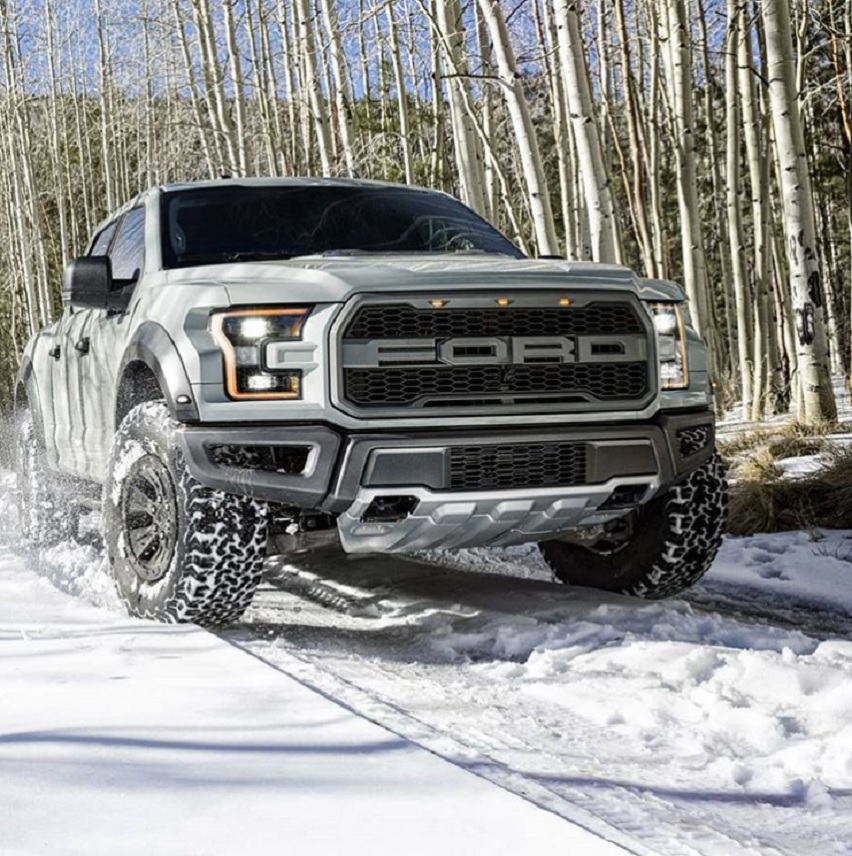
Why Are Headlights so Bright These Days?
Car headlights in the US can be a major headache, even if you know not to be fooled by blinker fluid. Headlights were arguably the first major automotive safety feature, but today they’re often side-lined compared to advanced driver-assistance systems. The result is that many modern headlights simply don’t do an adequate job of illuminating the road. So why is that Ford’s issuing a recall because its vehicles’ headlights are too bright?
Ford’s headlight recall
Ford’s recall, Consumer Reports explains, affects 2018-2020 F-150 trucks with the optional LED headlights. These trucks, like many modern vehicles, have daytime running lights, in addition to low-beams and high-beams.

Normally, when drivers switch on their low-beams at night or in inclement weather, the DRLs turn off. However, in the case of the LED-equipped F-150s, there’s a problem with the headlight switch software. Turning on the low-beams doesn’t turn off the truck’s DRLs, which means any oncoming driver gets hit with some extremely bright light. Apparently, this is an issue with the switch itself: it doesn’t occur when the lights are left in “Auto.”
However, as several users on the r/Cars sub-Reddit have commented, many drivers nowadays feel that headlights have gotten too bright in general. This seems odd, considering how poorly the IIHS found many car headlights perform.
In fact, car headlights have been getting brighter. Only, that’s not always the manufacturer’s fault.
How the modern headlight evolved
As Popular Mechanics explains, the first motor vehicle headlights weren’t terribly bright. Cars and bikes alike, as Brough Superior’s bikes demonstrate, used actual flames or chemical reactions to provide illumination.
Nowadays, though, Advanced Auto Parts reports headlights come in 3 electrically-powered varieties: halogen, LED, and high-intensity discharge/xenon. Halogens are basically upgraded versions of the traditional incandescent lightbulb, using a glowing filament to provide light. HIDs, though, use charged xenon gas (hence the name), and LEDs use electrical diodes.
Color temperature and brightness
HIDs last several times longer than halogens, and LEDs, because they draw less power, last even longer than that. Both are also brighter than halogen bulbs. Light brightness is measured in lumens. According to Donut Media, the typical halogen bulb puts out 1300 lumens of light. The average LED puts out 1600, but an HID emits 3000. There are even laser headlights on the horizon that can put out up to 6400 lumens.
However, as Popular Science and Assembly Magazine explain, modern HID and LED headlights are also a different temperature than halogens. Color temperature is measured in Kelvin, which is also used to measure the temperature of objects. As a metal bar, for instance, gets hotter, it begins to glow, going from orange to red to yellow to bright white and bluish-white. Thus, the whiter a headlight’s light is, the higher its color temperature.
Over time, HIDs and LEDs have started putting out whiter and bluer light. PowerBulbs reports daylight is roughly 5000K, while XenonPro reports some HIDs can put out 12000K light that’s gone straight past blue into purple. And although Quartz reports that blue light isn’t as harmful to your eyes as some would think, human eyes are very sensitive to blue light. So bluish-white LEDs and HIDs automatically seem brighter, even if they’re not actually putting out more lumens.
But, the reason why modern headlights seem brighter isn’t solely the light manufacturers’ fault. Many drivers are simply using their lights incorrectly.
High beams and incorrect positions
As Donut Media, r/Cars users, and Jalopnik note, many drivers leave their high beams on all the time. Potentially, this could be their attempt to make up for their own headlights’ lack of illumination. Regardless, it’s precisely this kind of behavior that causes oncoming traffic to be at a serious risk of crashing. It takes eyes several seconds to adjust from bright light, and it takes older drivers’ eyes even longer. And there’s a reason why off-road SUVs’ light bars are marked ‘for off-road-use only’: they’re too bright for normal driving.
It’s also likely your headlights are improperly positioned. You’ve likely noticed in your mirrors that, as a car goes down the road, it’s lights seem to dim and brighten. That’s because the headlights’ beams are bouncing off the road at different angles, which affects the light. A bump surface, additional weight in the trunk, and even lower tire pressures can all affect the headlight angle, even though the bulbs are technically fixed. But the biggest source of that kind of glare comes from owners and mechanics improperly installing the bulbs.
How to check your own headlights
For one, if you’ve noticed your own lights getting dimmer, check to make sure it’s not the covers getting old and damaged. If that’s the case, there are several restoration kits available to fix the issue.
Next, make sure your own lights are properly positioned. Park your cark with the headlights on in front of a flat surface. Mark off the vertical and horizontal centerlines of each light. Then, reverse the car about 25’. Your headlight beams should be about 2” below the centerlines. If they aren’t, use the adjusting screws found on the bulbs to reposition the beams. Some modern cars, though, come with automatically-leveling lights.
If that still doesn’t fix your headlights’ brightness, it may be time to consider upgrading them. While HIDs are undoubtedly brighter than halogens, they’re arguably too bright. They’re also significantly more expensive, and require installing additional equipment in older cars. LEDs, however, are a much more worth-while investment. They’re not as expensive as HIDs, but last significantly longer, and are more energy-efficient while providing more light.
Follow more updates from MotorBiscuit on our Facebook page.






